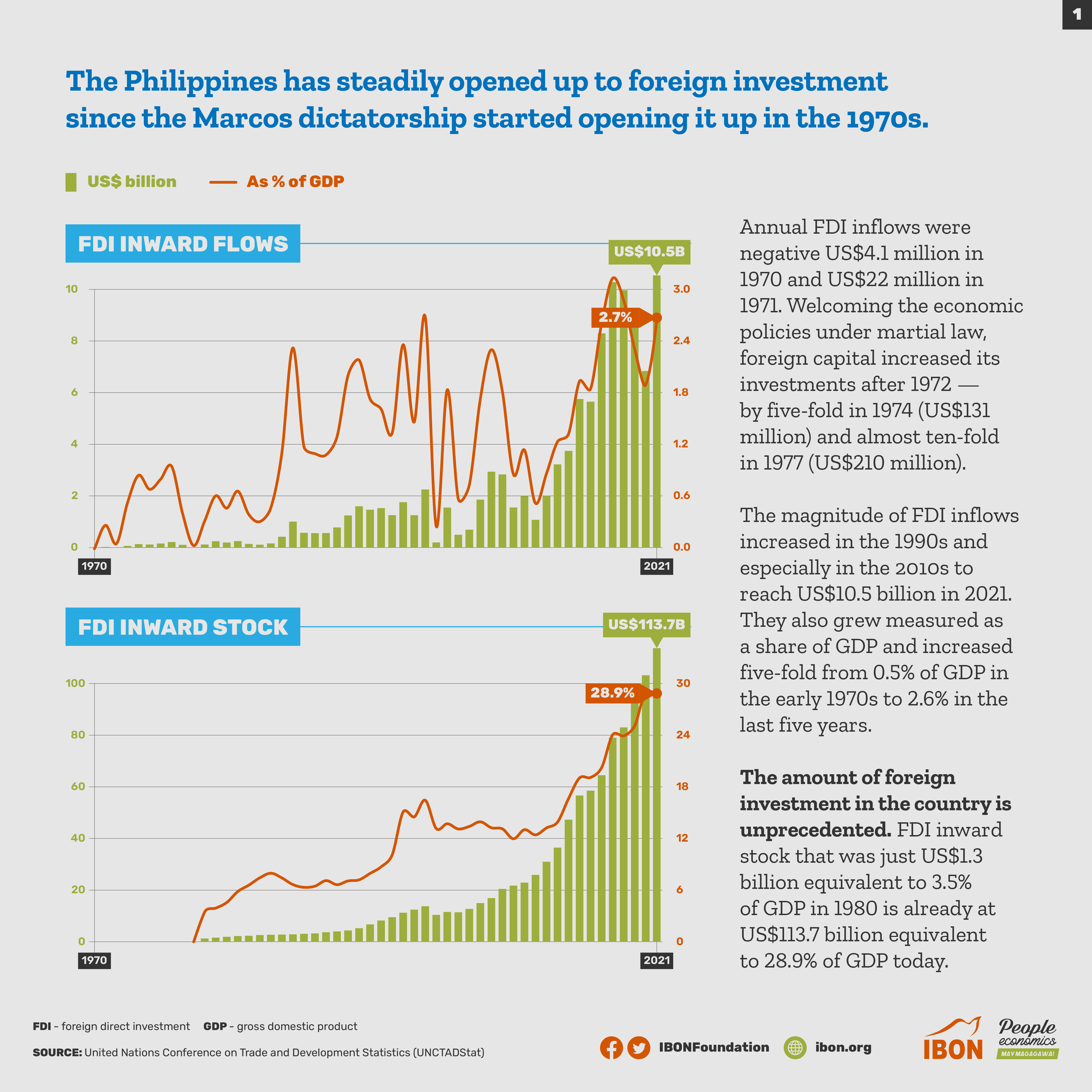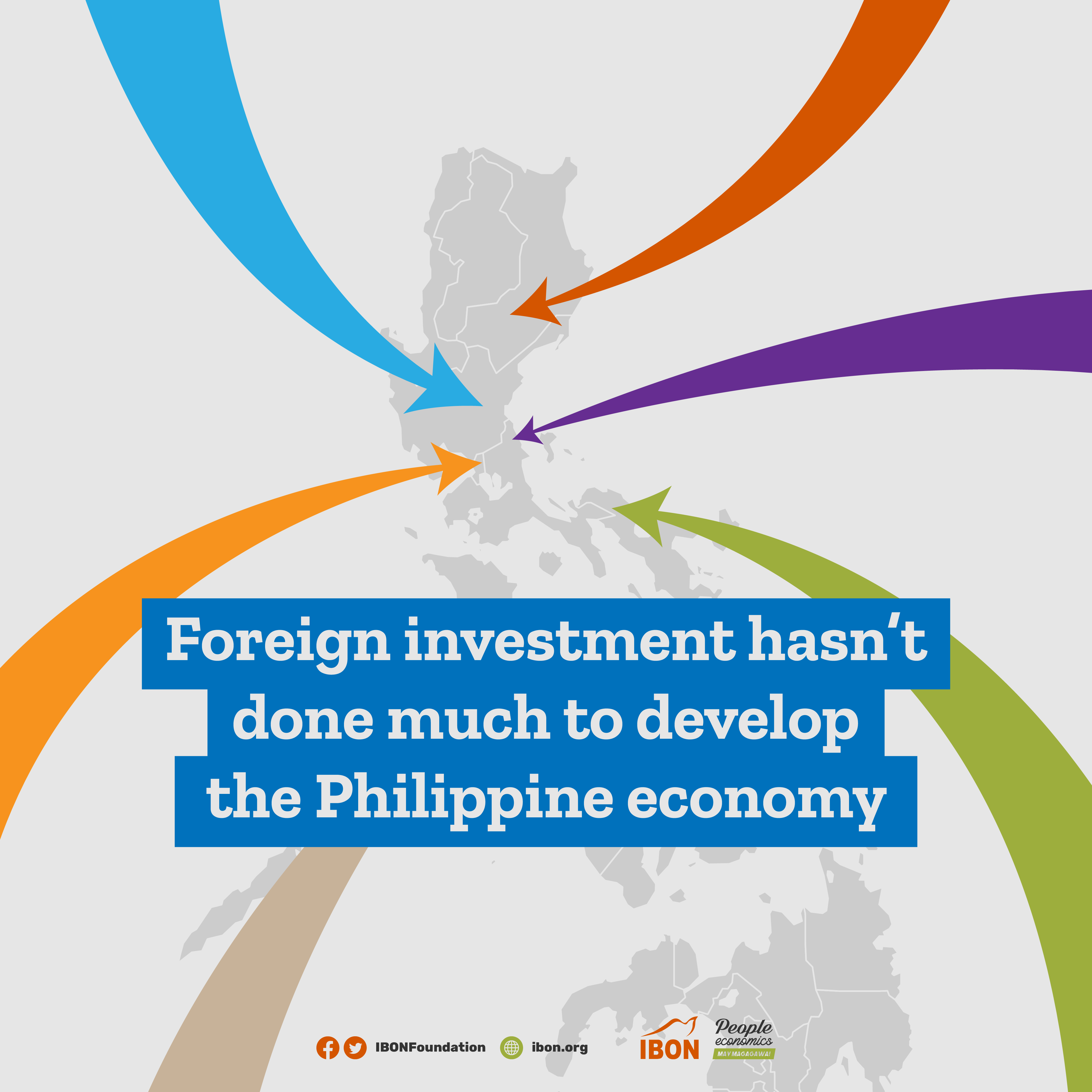
The Philippines has steadily opened up to foreign investment since the Marcos dictatorship started opening it up in the 1970s.
Annual foreign direct investment (FDI) inflows were negative US$4.1 million in 1970 and US$22 million in 1971. Welcoming the economic policies under martial law, foreign capital increased its investments after 1972 – by five-fold in 1974 (US$131 million) and almost ten-fold in 1977 (US$210 million).
The magnitude of FDI inflows increased in the 1990s and especially in the 2010s to reach US$10.5 billion in 2021. They also grew measured as a share of gross domestic product (GDP) and increased five-fold from 0.5% of GDP in the early 1970s to 2.6% in the last five years.
The amount of foreign investment in the country is unprecedented. FDI inward stock that was just US$1.3 billion equivalent to 3.5% of GDP in 1980 is already at US$113.7 billion equivalent to 28.9% of GDP today.

The Philippines actually has more foreign investment today than South Korea, Taiwan or China did in their respective periods of economic take-off – pretty much confirming that large amounts of foreign investment is neither necessary nor sufficient for development.
The largest part of FDI has historically been to manufacturing where there are no Constitutional restrictions – on average accounting for almost half (46%) of FDI into the country since the 1990s.
The stock of manufacturing FDI increased eight-fold from US$1.6 billion in 1990 to US$12.5 billion as of 2017, the latest year for which data is available.

Yet over that same period, the share of manufacturing to GDP actually fell from 25.5% to 19.3%, continuing to drop to just 18.7% in 2022 which is the smallest since the 1950s. The share of manufacturing to total employment also kept falling from 10.1% in 1990 to 8.6% in 2017. This kept dropping and is down to just 7.9% in 2022.
As it is, the majority of manufacturing production in the country is by foreign transnational corporations (TNCs) rather than truly Filipino industry. Over the period 1998-2021, foreign manufacturing TNCs accounted for nearly two-thirds (65.1%) of gross revenues of manufacturing firms in the Top 1,000 corporations.
Foreign investment can play a role in development but, clearly, not under the free market-oriented policy framework the government has been insisting on since the Marcos dictatorship. Pres. Ferdinand Marcos, Jr’s father started the neoliberal restructuring of economy to ever more systematically provide cheap labor, raw materials and investment opportunities to foreign capital at the expense of national economic development.
The current charter change offensive is the son aiming to complete what his father started over 50 years ago. The father’s economic policies, cronyism and corruption ushered in long years of deep economic crisis. If the son is allowed to change the 1987 Constitution, it is not just the current crop of narrow-minded corrupt politicians that will be more deeply entrenched – it is also self-serving foreign capital and underdevelopment.



